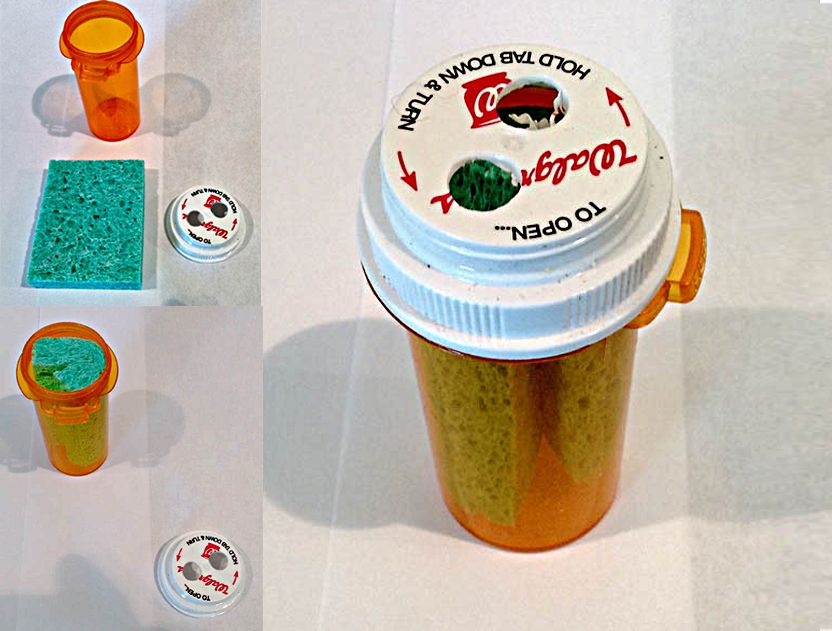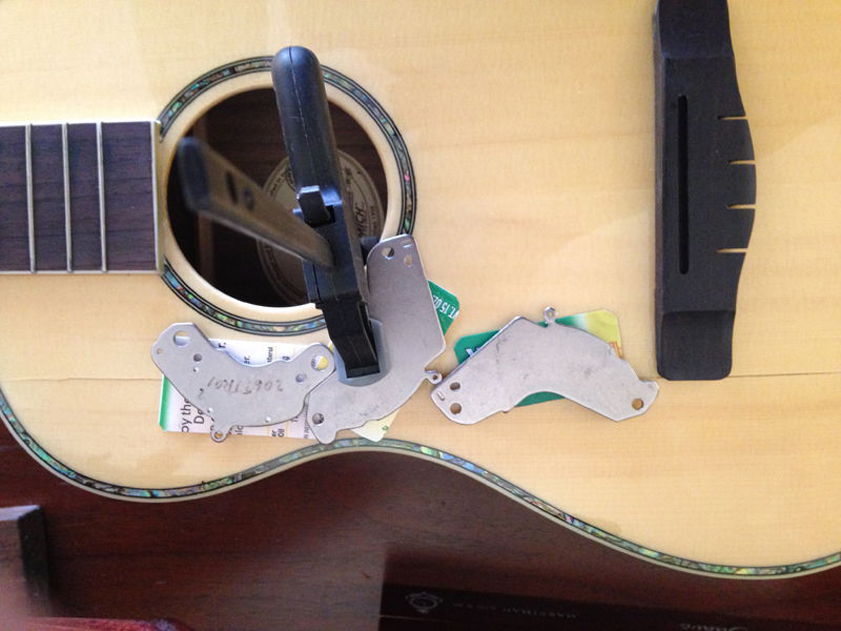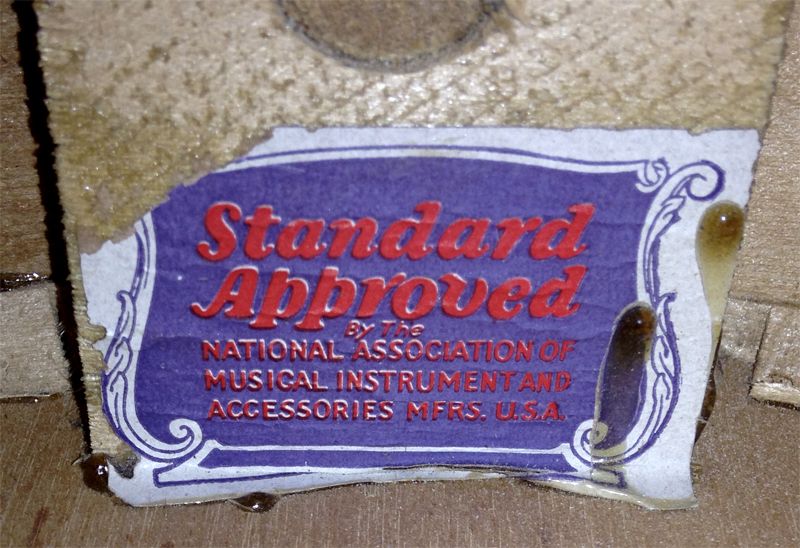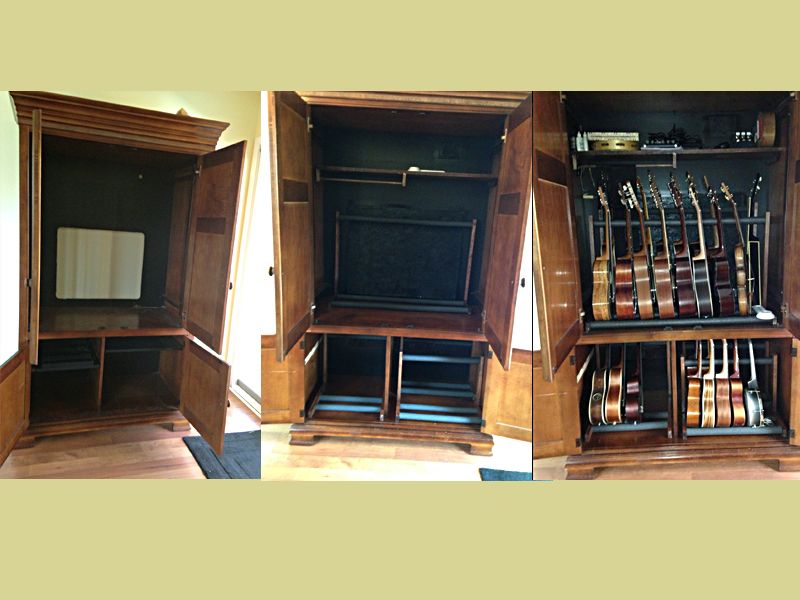

Steel strings
It is generally accepted that you cannot put steel strings on a normally constructed ukulele. The additional stress will pull the bridge off the top. While I cannot see the advantage or need to put such strings on for normal playing, I can see that for some specialised use, such as resonators and slide ukuleles that they might be useful.
The discovery of a web site with a string calculator changed my approach to steel strings.
https://wahiduddin.net/calc/calc_guitar_string.html
To use the calculator to feed in:
1) The scale length...one of the standard ukulele scale lengths
2 )The acceptable string tension...can be found on many of the string selling sites.
3) The note required...read the instructions on the calculator site as this is not just the note.
The result is a steel string that will provide the note at the tension required. This removes the worry about pulling the bridge off as the tensions involved are no more than the nylon strings for which it was designed.
I have used this for stringing the Gretch and Lanikai resonators and the slide kit ukuleles.
The only downside is that the frets may wear more quickly with steel strings but as none of the ukuleles are the main instruments I do not see that as a problem.
It is generally accepted that you cannot put steel strings on a normally constructed ukulele. The additional stress will pull the bridge off the top. While I cannot see the advantage or need to put such strings on for normal playing, I can see that for some specialised use, such as resonators and slide ukuleles that they might be useful.
The discovery of a web site with a string calculator changed my approach to steel strings.
https://wahiduddin.net/calc/calc_guitar_string.html
To use the calculator to feed in:
1) The scale length...one of the standard ukulele scale lengths
2 )The acceptable string tension...can be found on many of the string selling sites.
3) The note required...read the instructions on the calculator site as this is not just the note.
The result is a steel string that will provide the note at the tension required. This removes the worry about pulling the bridge off as the tensions involved are no more than the nylon strings for which it was designed.
I have used this for stringing the Gretch and Lanikai resonators and the slide kit ukuleles.
The only downside is that the frets may wear more quickly with steel strings but as none of the ukuleles are the main instruments I do not see that as a problem.
Scientific pitch notation
Here is an illustration of notes and their octave numbers.
For ukuleles the note info is:
Soprano and Concert G4 C4 E4 A4
Tenor G3 C4 E4 A4 High G4
Baritone D2 G3 B3 E4
For ukuleles the note info is:
Soprano and Concert G4 C4 E4 A4
Tenor G3 C4 E4 A4 High G4
Baritone D2 G3 B3 E4
Humidifier
A downside to solid wood instruments is the need to keep the humidity levels up. Too low and you could get cracks and sharp fret ends.
Commecial in case humdifiers are basically a medium to hold liquid inside a case. So this is a variation which costs nothing or a few dollars for some sponges.
Take a pill container, drill two holes in the lid and add an offcut of sponge.
I use distilled water which I hope will help prevent mold et.
Commecial in case humdifiers are basically a medium to hold liquid inside a case. So this is a variation which costs nothing or a few dollars for some sponges.
Take a pill container, drill two holes in the lid and add an offcut of sponge.
I use distilled water which I hope will help prevent mold et.
Donor Instruments
As the price of these China imports drops it becomes more practical to use them as a parts source. For the price you get a set of tuners, bridge and saddle and a neck and fret board combo already glued up and fretted.
The cost of the individual parts sometimes exceeds the cost of the donor instrument and you save on the labour of making the neck and fretting etc. (I am not proud). I always tart up the headstock with a veneer or two to avoid the generic look.
I only make the neck from scratch now for odd instruments like the Travelers ukulele. I know this might be viewed as cheating but it is only one step away from buying the parts and you still have the challenge of recovering the parts and fitting it all to the cigar box body etc.
The Violele neck was one such purchase and it took a lot of fettling to get it to fit the existing body dovetail socket and get the back angle for the violin bridge.
The cost of the individual parts sometimes exceeds the cost of the donor instrument and you save on the labour of making the neck and fretting etc. (I am not proud). I always tart up the headstock with a veneer or two to avoid the generic look.
I only make the neck from scratch now for odd instruments like the Travelers ukulele. I know this might be viewed as cheating but it is only one step away from buying the parts and you still have the challenge of recovering the parts and fitting it all to the cigar box body etc.
The Violele neck was one such purchase and it took a lot of fettling to get it to fit the existing body dovetail socket and get the back angle for the violin bridge.
Crack clamps
A pair of old Hard Drive magnets make a great aligning clamp for gluing and repairing cracks in tops. Adding a piece of plastic to the face of each magnet prevents them sticking to the wood surface.
I have extended the use of these clamps by taping one to the end of a flexible curve tool used in drawing/drafting. This allows you to reach the furthest corner of the body via the sound hole.
These magnets are really powerful and you don't want to get your fingers inbetween them!
I have extended the use of these clamps by taping one to the end of a flexible curve tool used in drawing/drafting. This allows you to reach the furthest corner of the body via the sound hole.
These magnets are really powerful and you don't want to get your fingers inbetween them!
Standard Approved
In 1926 there was a special session by the National Association of Musical Instrument and Accessories Manufacturers at their annual convention at Buffalo Convention BUFFALO, N. Y., October 4.
At their meeting the members of the National Association of Musical Instrument and Accessories Manufacturers, after due deliberation, adopted a standard string length for ukuleles, that is, the distance from nut to bridge in accordance with the recommendation of the special committee on ukulele standardization, of which W. I. Kirk is chairman and Messrs. Kordick and Walter Schmidt (Vice President of Oscar Schmidt) are the other members.
These standards are:
String length from thirteen inches to thirteen and three-quarter inches to be known as standard size ukuleles;
String length from thirteen and three-quarter inches to fourteen and one-half inches to be known as concert size ukuleles,
String length from fourteen and one-half inches to fifteen and three-quarter inches to be known as tenor size ukuleles.
All ukuleles which fall in the above classes must have at least twelve frets. The use of the curved or flat back and the naming of the kind of wood used are left to the discretion of the manufacturers.
Harmony seems to have particularly liked these conclusions because for the next 10 years they were inclined to put a label on all of their major brands of Ukulele, usually in the sound hole or on the back of the headstock, stating the instrument was "Standard Approved"
At their meeting the members of the National Association of Musical Instrument and Accessories Manufacturers, after due deliberation, adopted a standard string length for ukuleles, that is, the distance from nut to bridge in accordance with the recommendation of the special committee on ukulele standardization, of which W. I. Kirk is chairman and Messrs. Kordick and Walter Schmidt (Vice President of Oscar Schmidt) are the other members.
These standards are:
String length from thirteen inches to thirteen and three-quarter inches to be known as standard size ukuleles;
String length from thirteen and three-quarter inches to fourteen and one-half inches to be known as concert size ukuleles,
String length from fourteen and one-half inches to fifteen and three-quarter inches to be known as tenor size ukuleles.
All ukuleles which fall in the above classes must have at least twelve frets. The use of the curved or flat back and the naming of the kind of wood used are left to the discretion of the manufacturers.
Harmony seems to have particularly liked these conclusions because for the next 10 years they were inclined to put a label on all of their major brands of Ukulele, usually in the sound hole or on the back of the headstock, stating the instrument was "Standard Approved"
Basic tuning
I think that every ukulele player should be able to tune a ukulele without artificial aids. Rather like being able to do long division without a calculator.
It is not hard.
Tune 3rd string to a note
3rd string 7th fret =4th string
4th string 2nd fret = 1st string
1st open = 5th fret 2nd string.
The ukulele is now in tune with it’s self and is playable.
It is not hard.
Tune 3rd string to a note
3rd string 7th fret =4th string
4th string 2nd fret = 1st string
1st open = 5th fret 2nd string.
The ukulele is now in tune with it’s self and is playable.
Using classical guitar strings
On the tenor ukulele, those wanting a low G usually end up using a wound string to replace the solid string. This tends to result in an imbalance between this wound string and the solid C string.
The C string on a ukulele is the thickest string. It has always, I think, been on the cusp of really needing to be made differently. Compared with the thinner strings it does not have the ring and seems relatively dead. The louder wound string just seems to accentuate the problem.
So I have been trying using a wound C string. GHS make one (H-T13 0.035"). On the Fender tenor it seems to have evened out the different sounds between nylon and wound somewhat.
The downside is it provides another string on which you can squeak and scratch. Much of this is down to technique.
Basically classical guitar strings and ukulele strings are made of equivalent materials and are interchangeable if you know what you're doing.
The GHS 0.035". equates to a classical guitar 5th string. I have put a 5th string replacement on the Lanikai tenor and it does seem to match the wound low G already on it.
As a general rule, you can use the middle 4 strings (ADGB) of any classical guitar set on a baritone to tune to DGBE.
You can use the DGBE strings (4th to 1st) of any classical guitar set to tune a soprano/concert/tenor ukulele to GCEA (with low-G)
Also, you can use a single 5th classical guitar string to replace the solid C or third string on a tenor ukulele. Also on the tenor a 4th string will provide a low G.
I have used Alice Classical guitar strings ( 4th and 5th) for a while now and they are available on Ebay in packs of 10.
The C string on a ukulele is the thickest string. It has always, I think, been on the cusp of really needing to be made differently. Compared with the thinner strings it does not have the ring and seems relatively dead. The louder wound string just seems to accentuate the problem.
So I have been trying using a wound C string. GHS make one (H-T13 0.035"). On the Fender tenor it seems to have evened out the different sounds between nylon and wound somewhat.
The downside is it provides another string on which you can squeak and scratch. Much of this is down to technique.
Basically classical guitar strings and ukulele strings are made of equivalent materials and are interchangeable if you know what you're doing.
The GHS 0.035". equates to a classical guitar 5th string. I have put a 5th string replacement on the Lanikai tenor and it does seem to match the wound low G already on it.
As a general rule, you can use the middle 4 strings (ADGB) of any classical guitar set on a baritone to tune to DGBE.
You can use the DGBE strings (4th to 1st) of any classical guitar set to tune a soprano/concert/tenor ukulele to GCEA (with low-G)
Also, you can use a single 5th classical guitar string to replace the solid C or third string on a tenor ukulele. Also on the tenor a 4th string will provide a low G.
I have used Alice Classical guitar strings ( 4th and 5th) for a while now and they are available on Ebay in packs of 10.
Quick Intonation
I have this Lanikai S-T tenor ukulele which is my go to recording instrument.
Just recently I have been learning some solos which involve the dusty end of the neck. In one song the A string 8th fret note sounded a little off. Not by a lot but noticeable.
Rather than get involved with intonation adjustments I thought I would try the toothpick trick. I placed a wooden toothpick under the strings hard up against the nut. This effectively shortens the strings by moving the nut landing towards the saddle.
It worked! The note now sounds much better. So try this before getting involved in nut compensation.
As always intonation on ukuleles in an inexact science. You assume the frets are accurately placed, the saddle is in the correct location relative to the nut and the action is such that the string will not stretch too much when fingered. Added to this, each setting will only really apply to the strings you have on at the time.
It is enough to make you stick to strumming and cowboy chords!
Just recently I have been learning some solos which involve the dusty end of the neck. In one song the A string 8th fret note sounded a little off. Not by a lot but noticeable.
Rather than get involved with intonation adjustments I thought I would try the toothpick trick. I placed a wooden toothpick under the strings hard up against the nut. This effectively shortens the strings by moving the nut landing towards the saddle.
It worked! The note now sounds much better. So try this before getting involved in nut compensation.
As always intonation on ukuleles in an inexact science. You assume the frets are accurately placed, the saddle is in the correct location relative to the nut and the action is such that the string will not stretch too much when fingered. Added to this, each setting will only really apply to the strings you have on at the time.
It is enough to make you stick to strumming and cowboy chords!
Harmony Label dates
A summary of Harmony Label Styles
Very early (20's - 30's ) - Gold oval - red and white border with stylized garland at top Black
printing - HARMONY - MADE BY THE HARMONY COMPANY - CHICAGO. U .S.A .
Late 40's (perhaps) has black lettering against gold back ground, with no border . Gold background shadows the text - Harmony - CHICAGO U.S.A
Late 40's - Early 50's - A symmetrical decal with cream colored back ground bordered in shaded green with a ribbon like format Black lettering, on the cream -Harmony- made by
On the bottom of the green trim - The Harmony Company - Chicago U.S.A.
50's - In the symmetrical decaI described above, in the cream colored field, below ""Harmony - made by" is removed and reg. u .s. pat. office no 627412 is added"
50's - 60's In the symmetrical decal described, just above, in the cream colored field, below Harmony - made in the U.S.A . was added.
50's - 60's - An asymmetrical decal, with some coloring (cream/green) as those other cream/green (above), and all of the black text as with previous above.
The design of the decal reminds one of a watermelon seed (different color of course) exiting stage left ot great speed. Tapered .
Very early (20's - 30's ) - Gold oval - red and white border with stylized garland at top Black
printing - HARMONY - MADE BY THE HARMONY COMPANY - CHICAGO. U .S.A .
Late 40's (perhaps) has black lettering against gold back ground, with no border . Gold background shadows the text - Harmony - CHICAGO U.S.A
Late 40's - Early 50's - A symmetrical decal with cream colored back ground bordered in shaded green with a ribbon like format Black lettering, on the cream -Harmony- made by
On the bottom of the green trim - The Harmony Company - Chicago U.S.A.
50's - In the symmetrical decaI described above, in the cream colored field, below ""Harmony - made by" is removed and reg. u .s. pat. office no 627412 is added"
50's - 60's In the symmetrical decal described, just above, in the cream colored field, below Harmony - made in the U.S.A . was added.
50's - 60's - An asymmetrical decal, with some coloring (cream/green) as those other cream/green (above), and all of the black text as with previous above.
The design of the decal reminds one of a watermelon seed (different color of course) exiting stage left ot great speed. Tapered .
Harmony Plastic fretboards
The molded polystyrene fretboard was developed by Harmony and was used on their soprano scale ukuleles from the fifties through the sixties. Essentially, the idea was that Harmony could guarantee that the frets would be in good shape and the basic set-up of the instrument would be "stable."
The fretboards are not bad and don't really detract from volume, sustain, etc. and are easy to play. For the most part, the sopranos in this range were made of birch.
The fretboards are not bad and don't really detract from volume, sustain, etc. and are easy to play. For the most part, the sopranos in this range were made of birch.
Ukulele Armoire
A closet full of ukuleles in gig bags all requiring a humidifier in the winter lead me to thinking there must be a better way.
A visit to the local Goodwill store found a nice solid wood entertainment center. All the openings were closed off and a set of instrument stands were made to fit.
Now all the ukuleles are easy to get at, have more or less micro climate conditions and in theory provide a limit to the number of ukuleles I own. (Not working!)
The main shelf has baritones at the back and tenors at the front. The lower left are concerts and the lower right are sopranos.
The upper shelf holds the main collection of vintage sopranos.
A visit to the local Goodwill store found a nice solid wood entertainment center. All the openings were closed off and a set of instrument stands were made to fit.
Now all the ukuleles are easy to get at, have more or less micro climate conditions and in theory provide a limit to the number of ukuleles I own. (Not working!)
The main shelf has baritones at the back and tenors at the front. The lower left are concerts and the lower right are sopranos.
The upper shelf holds the main collection of vintage sopranos.
Video Recoding
After much experimenting I have found what seems to be the answer to recording my challenge videos.
After years of hiding behind slides and videos to accompany the song I have decided after much prompting to appear in front of the camera. This means I have to learn to play the whole tune in one go, rather than stitch together parts of the song. That’s a whole different problem.
My defective hearing means that the question of sound quality is something I have to watch for. Every ukulele sounds very scratchy and harsh. Any attempt to counter that results in a dull and muddy sound track (apparently)
So this is my way of getting around recording the sound track.
I use an IRIG ACOUSTIC STAGE microphone pickup on the ukulele. This records directly into a ZOOM H2 digital recorder.
My Iphone XR records the video and sound.
I usually create a backing track in BAND IN A BOX and this is played back from a portable computer into my bluetooth hearing aid.
Then using a video edtiing program (MOVAVI VIDEO PRO)
I synchronise the sound tracks from the Iphone and ZOOM. Then mute the Iphone track. This gives me a high quality sound track syncronised with the video.
The BIAB backing track is then added and synchronised with the video using the usual methods of clicks etc.
At this point I consult with the resident sound engineer (my wife) and any adjustments are usually limited to track balancing and perhaps a touch on the equaliser.
After years of hiding behind slides and videos to accompany the song I have decided after much prompting to appear in front of the camera. This means I have to learn to play the whole tune in one go, rather than stitch together parts of the song. That’s a whole different problem.
My defective hearing means that the question of sound quality is something I have to watch for. Every ukulele sounds very scratchy and harsh. Any attempt to counter that results in a dull and muddy sound track (apparently)
So this is my way of getting around recording the sound track.
I use an IRIG ACOUSTIC STAGE microphone pickup on the ukulele. This records directly into a ZOOM H2 digital recorder.
My Iphone XR records the video and sound.
I usually create a backing track in BAND IN A BOX and this is played back from a portable computer into my bluetooth hearing aid.
Then using a video edtiing program (MOVAVI VIDEO PRO)
I synchronise the sound tracks from the Iphone and ZOOM. Then mute the Iphone track. This gives me a high quality sound track syncronised with the video.
The BIAB backing track is then added and synchronised with the video using the usual methods of clicks etc.
At this point I consult with the resident sound engineer (my wife) and any adjustments are usually limited to track balancing and perhaps a touch on the equaliser.
SPRINGFIELD UKULELE
Incorporating The Ukuleleist, Springfield Uketopians and the Lei-Abouts
SPRINGFIELD UKULELE
Incorporating The Ukuleleist and Springfield Uketopians
SPRINGFIELD UKULELE
SPRINGFIELD UKULELE
Incorporating The Ukuleleist and Springfield Uketopians





